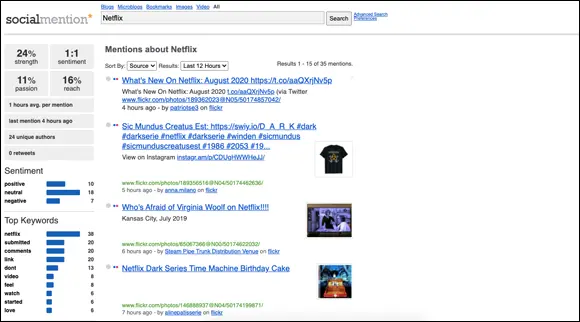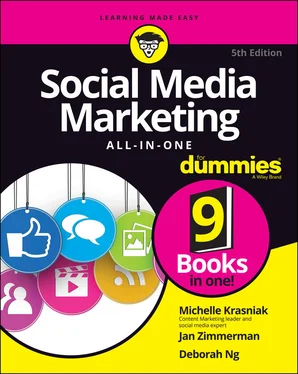The rule doesn’t appear to apply to individuals who post a review on public review sites (such as TripAdvisor or Yelp), but it applies if you review other companies’ products on your blog or send products to other bloggers to request a review.
You can find out more about this requirement from the disclosure resources listed in Table 4-4. Some bloggers, offended by the rules, have found humorous or sarcastic ways to comply. Others, such as The Review Stew ( www.thereviewstew.com/p/disclosures.html ), whose blog appears in Figure 4-7, are simply matter-of-fact about it.
TABLE 4-4Legal Resource Sites
| Name |
URL |
Description |
| American Bar Association |
www.americanbar.org/groups/intellectual_property_law/resources.html |
Intellectual property resource lists |
| DisclosurePolicy |
http://disclosurepolicy.org |
Generate free disclosure policies |
| Electronic Frontier Foundation |
www.eff.org |
Not-for-profit focused on free speech, privacy, and consumer rights |
| Federal Trade Commission |
www.ftc.gov/sites/default/files/attachments/press-releases/ftc-staff-revises-online-advertising-disclosure-guidelines/130312dotcomdisclosures.pdf |
Federal guidelines for digital media disclosure |
| FindLaw |
http://smallbusiness.findlaw.com/intellectual-property.html |
Intellectual property resources |
| International Technology Law Association |
www.itechlaw.org/ask-itech |
Online legal issues |
| PublicLegal from the Internet Legal Research Group |
www.ilrg.com |
Index of legal sites, free forms, and documents |
| Nolo |
www.nolo.com/legal-encyclopedia/ecommerce-website-development |
Online legal issues |
| Social Media Examiner |
www.socialmediaexaminer.com/ftc-2013-disclosures |
Article titled “What Marketers Need to Know about the New FTC Disclosures” |
| U.S. Copyright Office |
www.copyright.gov |
Copyright information and submission |
| U.S. Patent and Trademark Office |
www.uspto.gov |
Patent and trademark information, databases, and submission |
 Regardless of what you think of the policy, reveal any payments or free promotional products you’ve received. You can, of course, be as clever, funny, cynical, or straightforward as you want. Feeling lazy? Model a policy after the ones found at
Regardless of what you think of the policy, reveal any payments or free promotional products you’ve received. You can, of course, be as clever, funny, cynical, or straightforward as you want. Feeling lazy? Model a policy after the ones found at www.firmplay.com/social-media-policy/examples .

Courtesy of www.thereviewstew.com
FIGURE 4-7:This blogger sets out a clear acknowledgment policy on product endorsement.
Protecting Your Brand Reputation
It’s important to start protecting your brand now by registering your company name for social media accounts. To avoid brandjacking (others using your company or product brand name on social media for their own purposes or to write misleading or negative things about your company), try to choose the most popular, available handle that will work across multiple sites. Use your company or product name and keep it short.
 Even if you don’t plan to do anything else in social media for a year or more, register your name now on Facebook, Twitter, LinkedIn, and on any other sites you might want in the future, such as Pinterest or YouTube. You can register your name on every site while you read this book or reserve them all at once.
Even if you don’t plan to do anything else in social media for a year or more, register your name now on Facebook, Twitter, LinkedIn, and on any other sites you might want in the future, such as Pinterest or YouTube. You can register your name on every site while you read this book or reserve them all at once.
A number of companies now offer tools that claim to assess the quality of what people are saying about your company, products, or staff. In addition to counting how many times your name appears, they try to assess the sentiment of postings — whether statements are negative or positive. Some also offer an assessment of the degree of engagement — how enthusiastic or hostile a statement might be.
Some people then take this information, along with frequency of posting, and use their own proprietary formulas to assign a quantitative value to your online reputation, as shown in the example from The Brand Grader (free) ( https://onlinereputation.io/brand-grader ) in Figure 4-8.

Courtesy of https://onlinereputation.io/brand-grader
FIGURE 4-8:A portion of The Brand Grader report for Netflix.
Be cautious about assigning too much weight to these brand reputation tools, some of which are described in Table 4-5. They may produce widely varying results, and most rely on software that can’t understand complex sentences or shortened phrases with words omitted. If you think your dense sibling doesn’t understand irony, don’t try sarcasm with a computer!
Notwithstanding the warnings, experiment with one of the free or freemium sentiment-measuring tools in Table 4-5to see what, if anything, people are saying. ( Freemium tools offer a free version with limited features; more extensive feature sets carry a charge.) Those results, such as they are, will become one of many baselines for your social media effort. Unless you already have a significant web presence, you may not find much.
TABLE 4-5Brand Sentiment Resources
| Name |
URL |
Description |
| Attentio |
http://attentio.com |
Social media dashboard to track sentiment and more; paid |
| BrandsEye |
www.brandseye.com |
Online reputation tool; paid |
| Oracle CX Marketing |
www.oracle.com/us/solutions/social/overview/index.html |
Social relationship management tool; paid |
| Reputology |
www.reputology.com |
Monitor and respond to online reviews; paid |
| Mention |
https://mention.com/en/ |
Real-time alerts for mentions of your brand’s name; free and paid |
| Ubermetrics |
www.ubermetrics-technologies.com/blog/free-social-media-monitoring-tools |
List of free social monitoring tools |
| Social Mention |
http://socialmention.com |
Provides various statistics such as sentiment, top keywords, and sources (see Figure 4-9) |

FIGURE 4-9:The Social Mention results for Netflix.
Of course, many of these tools are designed for use by multinational corporations worried about their reputations after negative events, such as the Takata airbag recall or the 2016 scandal about Wells Fargo Bank staff who were pushed to create fake customer accounts.
Book 2
Читать дальше

 Regardless of what you think of the policy, reveal any payments or free promotional products you’ve received. You can, of course, be as clever, funny, cynical, or straightforward as you want. Feeling lazy? Model a policy after the ones found at
Regardless of what you think of the policy, reveal any payments or free promotional products you’ve received. You can, of course, be as clever, funny, cynical, or straightforward as you want. Feeling lazy? Model a policy after the ones found at 













